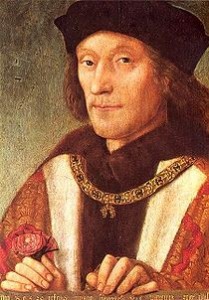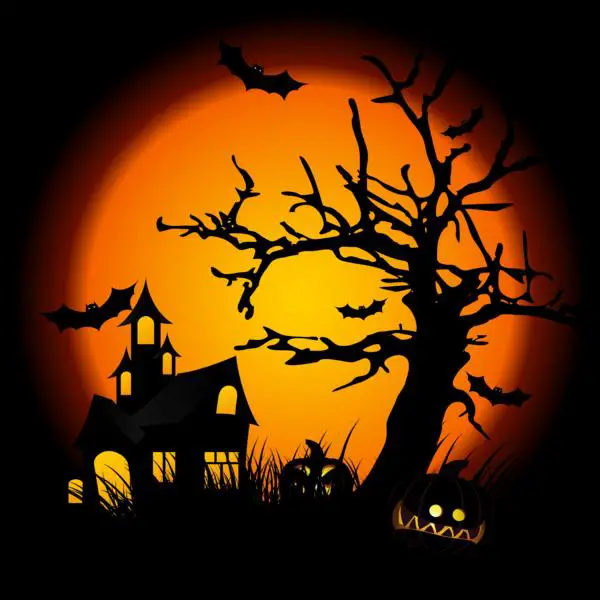 Thank you to our regular contributor, Heather R.Darsie, for writing this article on the coronation of Henry VII, founder of the Tudor dynasty.
Thank you to our regular contributor, Heather R.Darsie, for writing this article on the coronation of Henry VII, founder of the Tudor dynasty.
On 30 October 1485, Henry VII's coronation was held, and he became the first Tudor monarch. The date of 30 October was chosen in part because he wished to be crowned king before the next sitting of Parliament, which took place on 7 November. By having his coronation before the next sitting of Parliament, which was the first to take place after the Battle of Bosworth, Henry would not need Parliament to declare him the rightful king. There are not any contemporary descriptions of the coronation, but there are several items that show the careful and shrewd character which the 28-year-old Henry employed to make certain his claim to England was sound. All that is really known is that Henry’s coronation took place at Westminster Abbey.
Henry dated his reign as starting on 21 August 1485, or the day before the Battle of Bosworth. This allowed Henry to seize lands and properties for the crown from nobles who had fought alongside Richard III; those nobles could be declared traitors. The Crown of England was first placed on Henry's head on the field after the Battle of Bosworth, accompanied by cheers from his audience. Because he already had popular support, he sought to legitimise his status as king through tradition, ceremony, and divine right. The chronicler Edward Hall writes that: "[...] he with great pompe was conveighed to Westmynster, and there the thyrtye day of Octobre was with all cerymones accustomed, enoyted & crouned kyng by the whole assent as well of the commons as of the nobilitie, & was named kyng Henry the vii of that name… Which kyndome he obtained & enjoyed as a thing by God elected & provided, and by his especiall favoure and gracious aspect compassed and acheved.”
Henry VII’s device for the coronation, at least in the extant copies, effectively recycled the device used by Richard III in that Richard’s name was simply scratched out, with Henry’s being written above it. The same was done with the names of supporters listed in the document. Called the Little Device, it is actually quite long. It begins by stating:
“Here followeth vnder correction a litle devise of the coronacion of the most high and mightie christian Prince Henrie the vijth rightfull and indoubted Heire and king of the crowne of England and of Fraunce w their appurtenunces and by the hole assent of all the Lordes both Spirituell and Temporall, and also of all the commons of this Lande elect, chosen, and required the xxxth daye of October Anno Domini MCCCCiiij in London to be king of the same. Also of the most noble Princes dame Elizabeth his wief Lawfull Queen of Englande, fraunce, etc., to be solempnized at Westminster.”
The Little Device goes on to record who was present, the form of ceremonies necessary to complete the coronation, and the roles for Elizabeth of York in the coronation. Her ceremony was not held until 25 November 1587.
Turning to the words of the chronicler Raphael Hollinshed, it is recorded that:
“…[Henry] with great pompe… rowed unto Westminster, & there the thirtith daie of October he was with all ceremonies accustomed, anointed & crowned king, by the whole assent as well of the commons as of the nobilitie, & called Henrie the seaventh of that name… in the fortie and sixt yeare of Frederike the third then emperour of Almaine, Maximillian his sonne being newlie elected king of the Romans, in the second yeare of Charles the eight then king of France, and in fiue and twentith of king James then ruling the realme of Scotland.”
When considering the records offered by Hall and Holinshed, it is important to remember that Hall was not born until some point around 1498, thirteen years after Henry VII became king, whereas that Hollinshed had died in 1580, so was likely not alive for Henry’s coronation.
All in all, Henry VII took great effort in making certain that he displayed the necessary authority and right to the crown of England during his coronation. By combining multiple different themes such as the popular vote (temporal theme) and divine right (spiritual theme), Henry was showing the people that he was the only person suitable to rule, and that his claim was without doubt. This would set the tone for how his descendants would choose to show their right and legitimacy to the same crown.
You can also read Claire's article on Henry VII's coronation - click here - and members can read Leanda de Lisle's article "Henry VII's Coronation" in the August 2015 edition of Tudor Life magazine - click here.
Heather R. Darsie lives in the United States with her family and three parrots. She works in the legal field, with a focus on children. She obtained a Bachelor of Arts degree in German Languages and Literature, then a Juris Doctorate in American jurisprudence, and studied abroad in Costa Rica and France. Heather has always loved history. She first became acquainted with Elizabeth I when she was in middle school and chose to write a book report about her. Since then, she has always held an interest in the Renaissance and its numerous enigmatic citizens, with particular focus on the history of England and Italy. She is currently working on a book on the heraldry of Tudor women and is also researching Anne of Cleves.
Sources & Suggested Reading
- Little Device for the Coronation, Brit. Mus. Egerton MS. 985, fo. 1.
- Encyclopædia Britannica Online, s. v. "Raphael Holinshed", accessed 15 October 2016, https://www.britannica.com/biography/Raphael-Holinshed.
- Encyclopædia Britannica Online, s. v. "Edward Hall", accessed 20 October 2016, https://www.britannica.com/biography/Edward-Hall-English-historian.
- Hunt, Alice. The Drama of Coronation: Medieval Ceremony in Early Modern England. Cambridge University Press (2008).
- Wickham Legg, Leopold G., ed. English Coronation Records. Whitehall Gardens: Archibald Constable & Co. (1901).
- Trueman, C.N. “Securing the Throne.” The History Learning Site. http://www.historylearningsite.co.uk/tudor-england/securing-the-throne/ retrieved 10 October 2016.



What a coincidence as I have gone down to Wales today and am going to Anglesey tomorrow.
I hope you enjoy your time in Wales, my parents live in North Wales.
I live in Wales currently.
i haet he nry tuodtr!!!!!!!!!!!!!!!!!!!!!!!!!!!!!!!!
!!!!!!!!! i so better gysus!!!! herny tuodrt pooped on my lunhcbxo
What did you say about me?
I would just like to correct that Elizabeth of York was crowned at 25 November 1487 (not 1587).
Elizabeth of York was crowned in 1487, not 1587. Typpo.